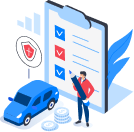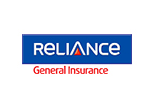Understanding Compulsory and Voluntary Excess in Motor Insurance
Understanding Compulsory and Voluntary Excess in Motor Insurance
Do you hear about the excess in insurance? Whether you have two-wheeler or four-wheeler insurance, you should have a distinct idea about the excess of the motor insurance. Significantly, few insurance policyholders go through a policy’s terms and conditions thoroughly. While you are involved in an accident, such as for damaged vehicles or any other claims, you learn about the excess in motor insurance. It has been a gray area of motor insurance that is not widely discussed. All the conversations are going on about the insurance claims of vehicles, injured persons or properties.
While you apply for a claim for your vehicle, the insurance company informs you about the excess, which you have to pay from your pocket. It’s awestruck you, as you don’t know about the excess, but after looking at the terms and conditions, you are now aware. This is one of the hidden causes that you have to know before buying or renewing motor vehicle insurance. This predetermined amount or clause will stun you at the time of raising the claim. Understanding this aspect of vehicle insurance gives you an edge over others who have yet to know it. This article will explain more essential details of excess motor insurance.

What is Excess in Motor Insurance?
Before going deep into other necessary details, you must have an overall understanding of excess in motor insurance. Excess, which is also known as deductible, is an amount that the vehicle owners have to pay when a claim is approved. Suppose you submit a claim of INR 5000, and the excess amount is INR 500. Then, instead of the total amount, the insurance company pays INR 4500, and the rest of the amount must be paid by the insured person. Excess in vehicle insurance works just as the co-payment applies in health insurance.
This deductible or excess can be any amount, and it is written on the insurance paper when you purchase or renew the motor insurance. Excess motor insurance has two kinds of deductibility, and these are compulsory deductible or excess and voluntary excess, respectively. The deductible amount can be fixed or vary, and it solely depends on which kind of excess you choose during the purchase of vehicle insurance. By understanding these two types of deductibles, you can decide which one suits you financially, and then you can go for it. As motor insurance is dedicated to getting coverage for unpleasant mishaps, in advance it gives you clarity in emergency situations.
What is Compulsory Excess?
The first type of excess in motor insurance is compulsory excess, which is mandatory in any insurance policy. All insurance policies have some deductibles, and the compulsory deductible is the primary deductible. In compulsory excess motor insurance, the deductible amount is fixed. That’s why you have no other option but to pay that amount at the time of receiving the vehicle’s insurance claim. For instance, if you applied for a claim of INR 2000 and the compulsory deductible is INR 200, the insurer pays only INR 1500.
Like the copay of health insurance, the insurance company credits the claim amount after deducting the fixed amount, as mentioned in the insurance copy. This compulsory insurance can be varied according to the policy terms and conditions of that concerned insurance company. In every claim process, the compulsory excess will be applied consequently.
Whether you have car or bike insurance, you should have the compulsory excess. If you aren’t aware of it, check your insurance policy as soon as possible. Generally, for cars up to 1500cc engine capacity, there is a compulsory deductible of INR 1000 and INR 2000 for cars exceeding 1500cc. On the other hand, the compulsory excess for two-wheelers is fixed, and the amount is INR 100.
Things to Know About Compulsory Excess
After knowing the definition of compulsory excess in motor insurance, now comes the issue of which things you keep in mind regarding this kind of insurance policy. Let’s look at some of the key things about compulsory deductibles:
-
Reducing Small Claims: There is a tendency among many insurance policyholders to submit claims for the smallest vehicle or third-party vehicle damages. For the small claims, the insurer has a technical cost attached. With the intention of reducing the number of insurance claims, the insurers introduce deductible motor insurance. That’s why it deters the more minor claims.
-
Non-Negotiable: You cannot decide the amount of compulsory access. There is no option where you can opt for anything under the deductible excess. As the insurance company has decided on compulsory access, you are not allowed to modify it.
-
Vehicle Type: The insurance company has categorized the vehicle by which they have labeled the compulsory excess amount. Including the vehicle engine type, model and age, the deductible amount is decided.
-
Claim Type: Although the compulsory deductible is varied according to the claim you submit. This variation is on the basis of claims such as windscreen damage or engine damage.
What is Voluntary Excess?
Voluntary deductible is the extra amount that an insured vehicle owner must pay. Unlike the compulsory excess, it is not a fixed amount. It varied according to the motor insurance policyholder's wishes. The voluntary excess has a severe impact on your vehicle insurance premium. Here you have a big say regarding the voluntary deductible amount.
You can get a 20% discount on your own damage premium (comprehensive plan) up to INR 750, and the voluntary excess amount will be INR 2500. A maximum of INR 1500 or a 25% discount on the own damage premium can be gotten if you opt for the voluntary deductible of INR 5000. On the other hand, with the voluntary access of INR 7500 and INR 15000, you will receive 30% on your own damage premium (maximum of INR 2000) and a maximum of INR 2500 or 35% on your own damage premium, respectively.
Things to Know About Voluntary Excess
If you are a vehicle owner and want to choose the voluntary excess in your motor insurance policy, you must go through these essential things.
-
Policyholder’s Control: In voluntary excess, you have the liberty to choose the deductible amount that is absent in compulsory excess. Here, the insurer gives you the liberty to choose the amount as per your wish.
-
Reduce Premium: As soon as you opt for the voluntary deductibility, the insurance company gives a substantial discount on your insurance premium. This is an encouragement to choose voluntary excess.
-
Modified: The policyholder can change the voluntary excess amount in the future as per their convenience.
-
Lower Claim Pay-out: When you choose a higher voluntary deductible, the insurer leads to a lower claim pay-out.
Difference between Compulsory and Voluntary Excess:
Go through the table below to segregate between the two types of excess in motor insurance. This comparison enables you to choose between these two before purchasing or renewing your next vehicle insurance policy.
|
Feature |
Compulsory Excess |
Voluntary Excess |
|
Amount |
The amount is fixed by the insurer, and the policyholders can’t change it |
Vehicle owners can change the amount as per their choice. |
|
Premium |
There is no effect on the price of the insurance premium. |
The insurance company gives enough discount on the insurance premium |
|
Modification |
As the amount is fixed for a particular vehicle, it can’t be changed. |
The policyholders are able to change it. |
|
Purpose |
The insurer’s purpose is to prevent small claims. |
In this case, the purpose is to reduce the premium amount. |
|
Flexibility |
As this type of excess is mandatory, no flexibility is available. |
This additional type of insurance is flexible and can be increased or decreased. |
Conclusion
In the end, compulsory excess and voluntary excess are two vital components of excess motor insurance. As a vehicle owner, you have to accept this fact and make up your mind accordingly. While the compulsory deductible has its own pros and cons, the voluntary excess also has some advantages and disadvantages. Being a smart vehicle insurance policyholder, you should choose as per your need.
Before taking any decision, you have to check the motor insurance’s terms and conditions efficiently. This article also makes a severe effort to make in-depth knowledge about excess vehicle insurance. Hence, make the best decision according to your perspective about this insurance.
FAQs
1. Is it mandatory to have voluntary excess in my car insurance?
A: No, there is no obligation to choose voluntary deductibility. Whether you opt for it or not is completely up to you.
2. How is the compulsory excess determined?
A: The insurance company determines the compulsory excess according to the vehicle model, engine type or even age.
3. Is there any discount on my insurance premium on voluntary excess?
A: Yes, the insurer gives the insurance policyholder a discount on the own damage premium. However, it entirely depends on the voluntary amount you choose.
4. Can I modify the voluntary excess?
A: Yes, you can increase or decrease the voluntary amount as per your convenience. You just have to opt for that amount.
5. What is the purpose of introducing the compulsory deductibility?
A: As the vehicle owner submits the smallest claim. That’s why the purpose is to deter those small claims in motor insurance.














































